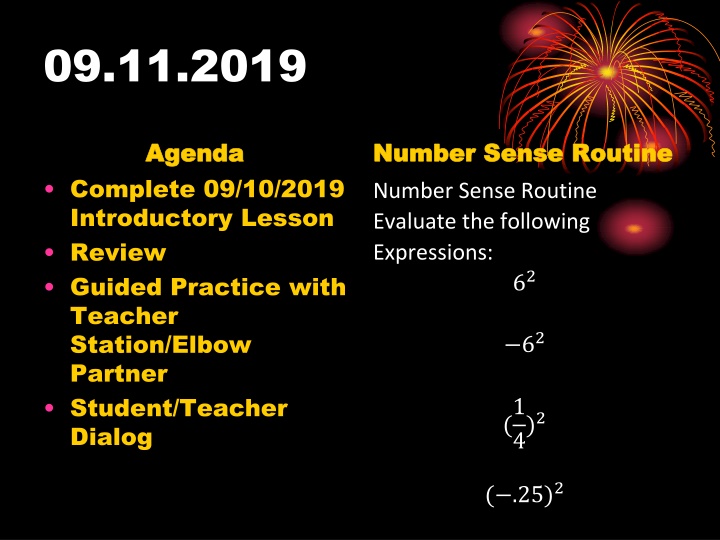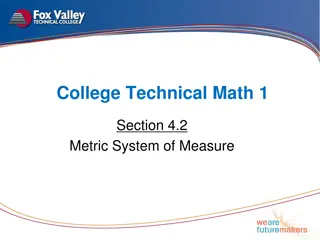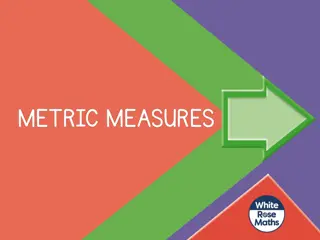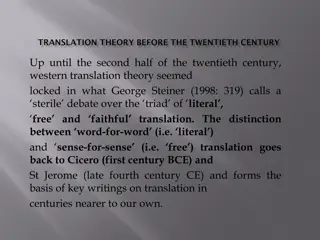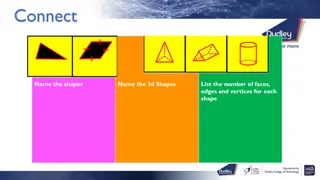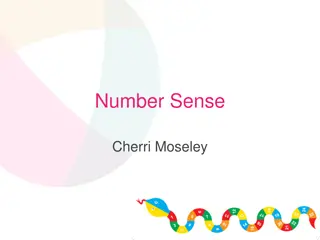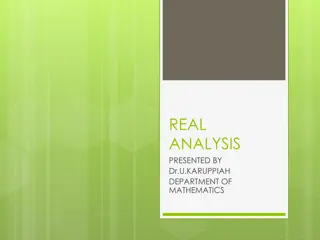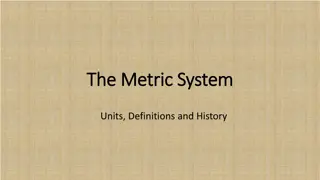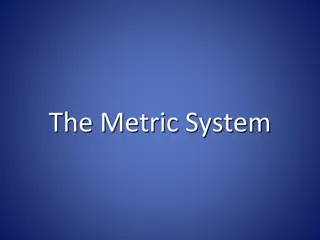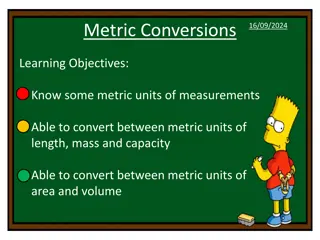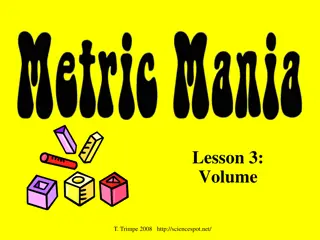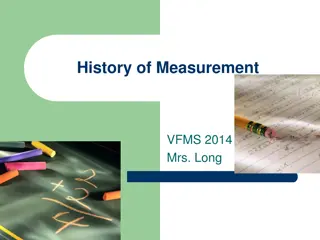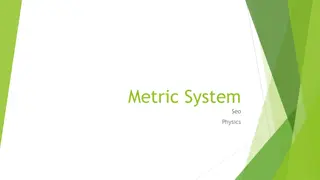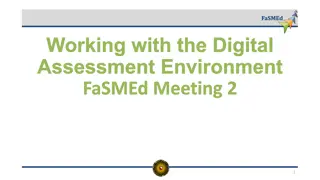Number Sense Routine and Metric System Basics
Number sense routines and the fundamentals of the metric system, including prefixes, unit conversions, and key concepts for understanding measurements. Gain insight into evaluating expressions and practicing with metric units through engaging activities and visual aids.
Download Presentation

Please find below an Image/Link to download the presentation.
The content on the website is provided AS IS for your information and personal use only. It may not be sold, licensed, or shared on other websites without obtaining consent from the author.If you encounter any issues during the download, it is possible that the publisher has removed the file from their server.
You are allowed to download the files provided on this website for personal or commercial use, subject to the condition that they are used lawfully. All files are the property of their respective owners.
The content on the website is provided AS IS for your information and personal use only. It may not be sold, licensed, or shared on other websites without obtaining consent from the author.
E N D
Presentation Transcript
09.11.2019 Agenda Agenda Number Sense Routine Number Sense Routine Number Sense Routine Evaluate the following Expressions: 62 Complete 09/10/2019 Introductory Lesson Review Guided Practice with Teacher Station/Elbow Partner Student/Teacher Dialog 62 (1 4)2 ( .25)2
Metric System Notes and Practice
Metric system is based on the power of 10. Meter is a measure of length Gram is a measure of mass Liter is a measure of liquid volume Celsius is a measure of temperature
Prefixes Kilo (k) Hecto Deka (da) Base Unit 1 100 meter(m) liter(L) gram(g) Deci (d) Centi (c) Milli (m) 1000 100 10 103 102 101 (h) 1/10 10-1 1/100 10-2 1/1000 10-3
Remember King Henry Died Unexpectedly base unit Drinking Chocolate Milk kilo hecto deca deci centi milli
Some things to remember when converting units. To convert from a larger to smaller metric unit you always multiply moving the decimal place to the right To convert from a smaller to larger unit you always divide moving the decimal place to the left
For every step upward (or to the left) For every step upward (or to the left) on the chart you are dividing by 10 or on the chart you are dividing by 10 or moving the decimal one place to the moving the decimal one place to the left.. left..
For every step downward on the chart For every step downward on the chart you are multiplying by 10 or moving the you are multiplying by 10 or moving the decimal one place to the right.. decimal one place to the right.. Example: Example: To convert 2 kilometers to To convert 2 kilometers to meters you move 3 steps down meters you move 3 steps down on the chart so you move the on the chart so you move the decimal 3 places to the right decimal 3 places to the right 2 kilometers = 2000 meters 2 kilometers = 2000 meters
Example: Example: To convert 345 milligrams to To convert 345 milligrams to grams you move 3 steps up on grams you move 3 steps up on the chart so you move the the chart so you move the decimal 3 places to the left decimal 3 places to the left 345 mg = .345 g 345 mg = .345 g
Conversions between English and Metric System 2.2 pounds equals 1 kilogram 2.54 centimeters equals 1 inch F = (C X 1.8) + 32 C = F 32 1.8
Practice 1.) 3 meters = ______ centimeters 2.) 40 liters = ______ deciliters 3.) 600 milligrams = _______ grams 4.) 5 kilometers = __________ hectometers 5.) 70 centimeters = _________ meters 6.) 900 deciliters= _______ milliliters 7.) John's pet python measured 600 centimeters long. How many meters long was the snake? 8.) Faith weighed 5 kilograms at birth. How many grams did she weigh? 9.) Jane has a pencil that is 8 inches long. How long is that in centimeters?
